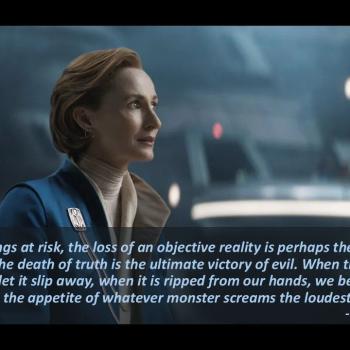Part Three of Philip Clayton’s Adventures in the Spirit is about Panentheism. Chapter 8 offers an introduction to panentheism and the closely related subject of process thought. A cumulative case is made for why panentheism might be adopted as a theological framework rather than classical theism. Clayton realizes that for some the attractiveness of panentheism is self-evident while others fail to see what the attraction is: the former tend to be philosophical theologians rather than systematic or biblical ones (p.120). Some feel that panentheism does less justice to the notion of God interacting with us in a personal way than classic theism does, but Clayton points out that it is not enough to simply express the desire to retain divine personhood, and he will go on to show that panentheism can do justice to God’s status as “at least personal” and “more than personal”. But in the present context, he emphasizes that the concept of “person” is “not a self-explanatory category” (p.122), and further reflection and exploration is needed no matter which sorts of language are to be applied to God.
Interacting with Spinoza and Hegel (among others), Clayton shows that the notion of God as infinite seems to lead naturally to panentheism, since the truly infinite must include all finite realities within itself (p.126). And yet (in contrast to a quotation from Hartshorne provided on p.119) the “in” of the concept of “everything in God” (panentheism) is to be viewed as a metaphor (p.128), particularly if we wish to use the language of God being in us or in the world, as well as vice versa.
Clayton articulates his view of religious language: “If one is to speak of the divine at all, one must speak analogically – even though all finite, human analogies are inadequate to the infinite God. If one chooses to speak, one will wish to use the best analogies available, while openly acknowledging their limitations” (p.129). He then goes on to expound further on why he believes that concepts such as emergence and panentheism are particularly helpful ones for thinking theologically in relation to our current understanding in the natural sciences and other disciplines. He warns once again, however, against assuming that the notion of the universe as becoming divine and not-yet-divine is the best that can be salvaged from traditional notions of God in light of modern science (pp.131-132). This represents an appropriate caution, firmly rooted in Clayton’s understanding of theological language and of the history of theology. All analogies must ultimately be negated when applied to God (p.173), and the contributions of theologians from the past have been found wanting time and time again not only when they have refused to engage contemporary currents of thought and knowledge, but also when they have allowed themselves to be carried uncritically along with them.
Chapter 9 offers a postfoundationalist approach to pneumatology and the language of Spirit. Postfoundationalism, Clayton explains, means the approach to reason that seeks coherence rather than seeking to build the entire edifice of thought on a sure foundation that can be neutrally established (p.134). A key area that requires reconsideration is how to think about Spirit other than in the classic terminology and concepts of substances. Once again, the analogy of mind and body is introduced, with spirit representing an irreducible level and aspect of human existence, but not a separate substance introduced into and distinct from the physical constituents of human persons (p.145). The dual pitfalls Clayton identifies (p.146) are in introducing the language of spirit at too low a level (leading to vitalism or pantheism) or in abstraction from what we know about human persons (leading to dualism). Drawing on the analogy with human bodies, the regularities of the universe can usefully be compared to the autonomic functions of our bodies (p.148). And once again, Clayton warns against simply following the logic of the analogy to its end, leaving room for God (and human persons?) to survive independently of their bodies (p.148). Before concluding this chapter, Clayton relates theology to anthropology, in a manner reminiscent of Peter Berger’s treatment of this subject. Theological language points towards transcendence but at the same time tells us much about ourselves and the contexts within which we formulate our theologies (p.155).
Chapter 10 articulates a “trinitarian” process theology. It is not Trinitarian in the sense that it seeks to cohere with the traditional creedal formulations about God as triune, but in the sense that, in contrast to the dipolar theology of much process thought, Clayton is persuaded that theology requires a threefold structure. Helpful and challenging treatments are offered on topics such as God as not “a being”, the “God above God”, and the economic and immanent Trinity, with some fascinating interaction with Schelling in the process (if you’ll excuse the pun). Towards the end of the chapter (cf. p.173), Clayton begins grappling with the Christological questions raised by his theology.
Chapter 11 is the last in part 3, and applies the notion of kenosis to creation. Cosmology is defined as an enterprise that must be scientifically well-informed but which remains inherently metaphysical (p.176). Clayton formulates an “open panentheism” in dialogue with open theism, addressing how each deals with the relationship between divine self-limitation and the problem of evil (p.179). In contrast to many panentheists, Clayton seeks to preserve the traditional doctrine of creation out of nothing (pp.183-4).
Clayton’s articulation of his theological conclusions in this section continues to grapple with issues of method as well as with specific outcomes and conclusions. Some will feel that Clayton has gone too far in one direction, while others will claim he hasn’t gone far enough. But Clayton’s model of seeking to relate Christianity, the natural sciences and philosophical metaphysical questions in a serious and thoughtful way provides an excellent basis for such ongoing discussions.
The two remaining sections of the book will look at divine action and the broader practical application of the approach outlined thus far.












